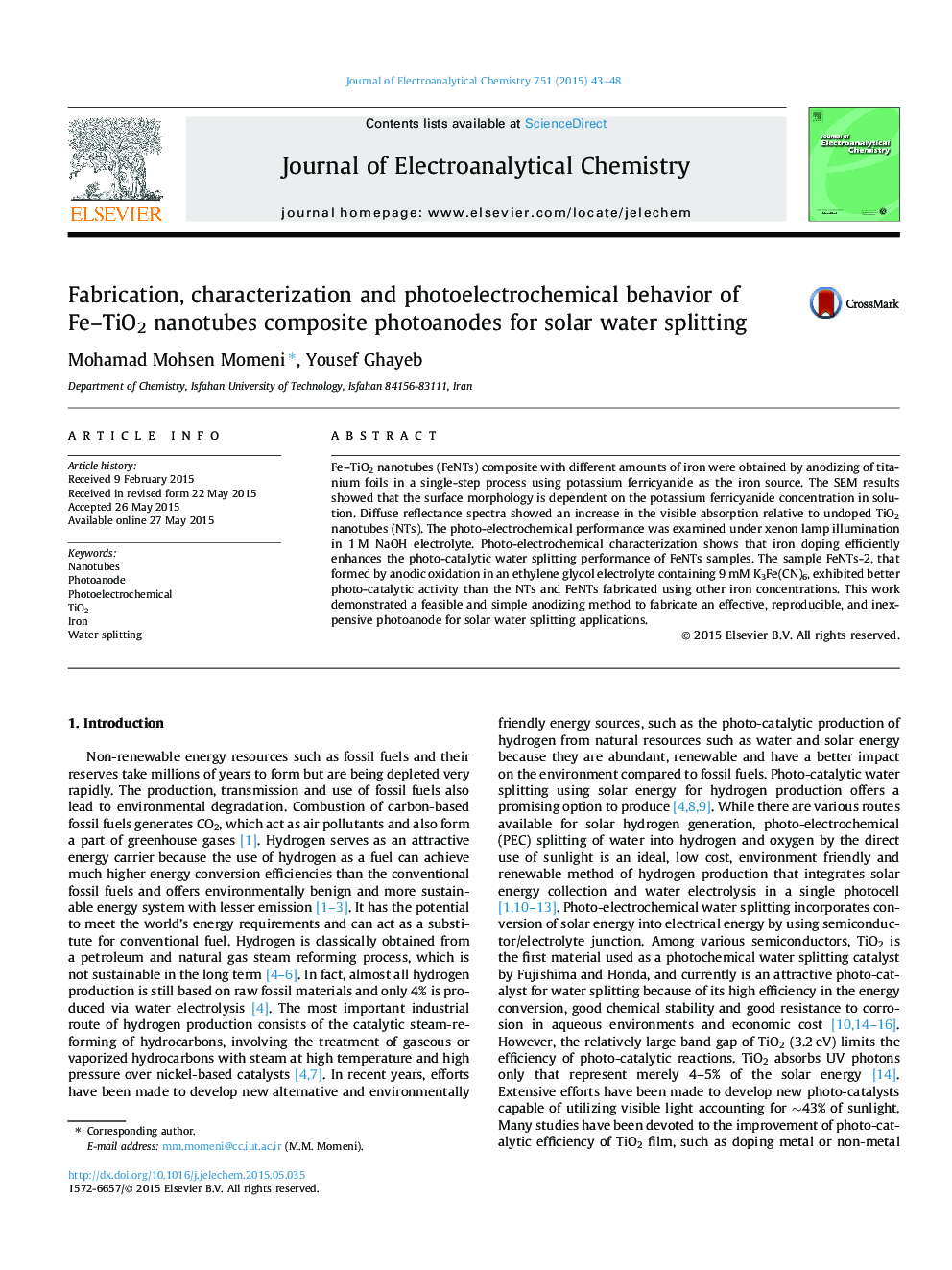| Article ID | Journal | Published Year | Pages | File Type |
|---|---|---|---|---|
| 218269 | Journal of Electroanalytical Chemistry | 2015 | 6 Pages |
•FeNTs photoanodes were synthesized by titanium anodizing in a single-step process.•K3Fe(CN)6 was used as the iron source.•Band gap energies decreased from 3.18 eV for NTs to 2.03 eV for FeNTs.•Photoelectrochemical water splitting of FeNTs is higher than that of NTs.•H2 evolved on the FeNTs was 6.67 times higher than that on the NTs.
Fe–TiO2 nanotubes (FeNTs) composite with different amounts of iron were obtained by anodizing of titanium foils in a single-step process using potassium ferricyanide as the iron source. The SEM results showed that the surface morphology is dependent on the potassium ferricyanide concentration in solution. Diffuse reflectance spectra showed an increase in the visible absorption relative to undoped TiO2 nanotubes (NTs). The photo-electrochemical performance was examined under xenon lamp illumination in 1 M NaOH electrolyte. Photo-electrochemical characterization shows that iron doping efficiently enhances the photo-catalytic water splitting performance of FeNTs samples. The sample FeNTs-2, that formed by anodic oxidation in an ethylene glycol electrolyte containing 9 mM K3Fe(CN)6, exhibited better photo-catalytic activity than the NTs and FeNTs fabricated using other iron concentrations. This work demonstrated a feasible and simple anodizing method to fabricate an effective, reproducible, and inexpensive photoanode for solar water splitting applications.
Graphical abstractFigure optionsDownload full-size imageDownload as PowerPoint slide
